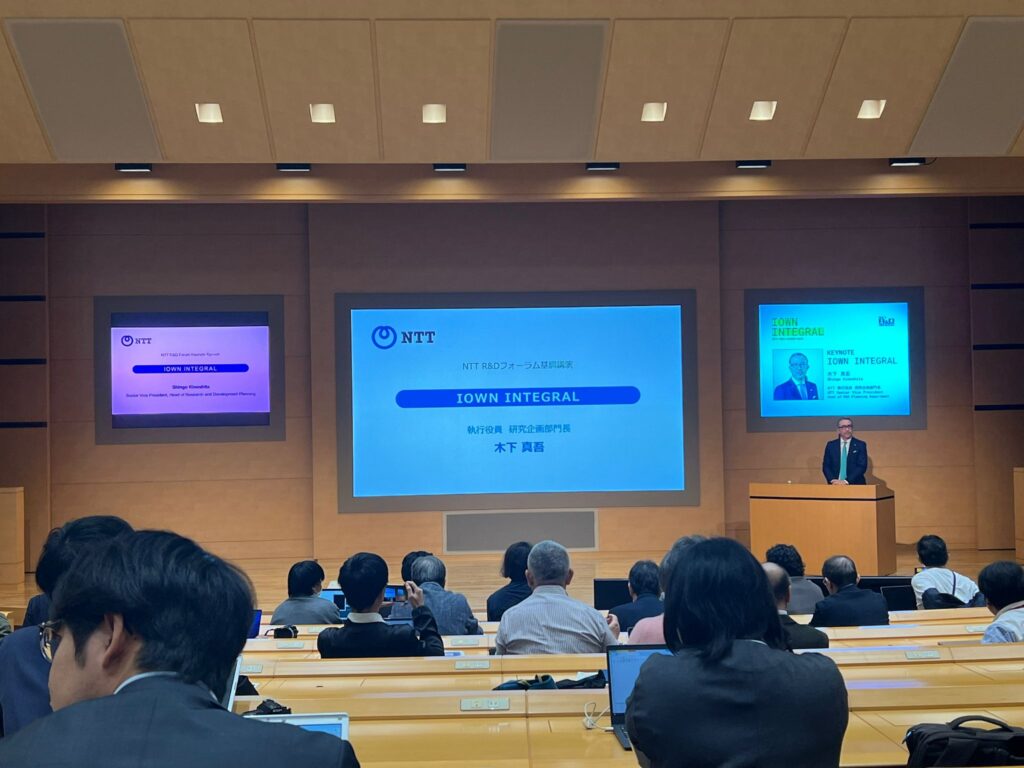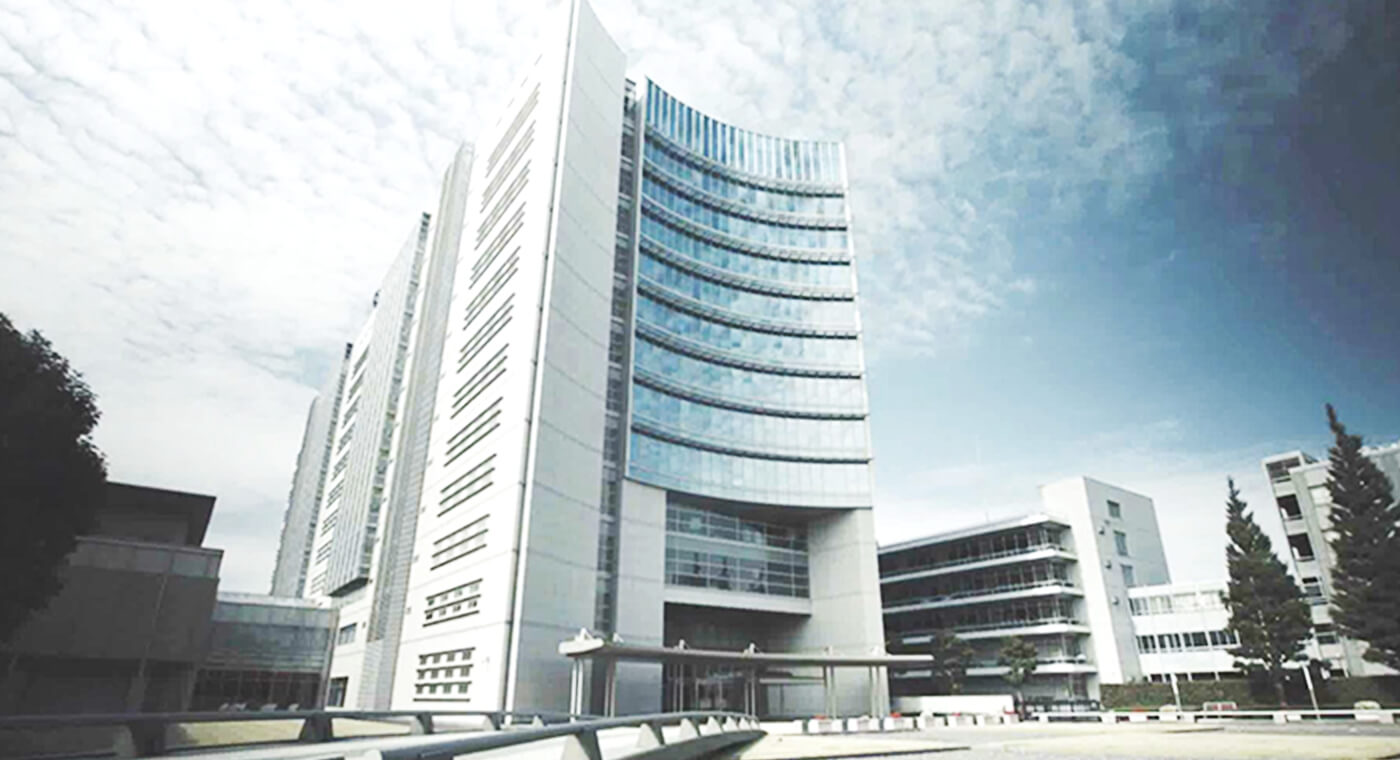Japanese telecoms and technology giant, NTT, opened its annual R&D Forum in Tokyo, Japan on Thursday to showcase the company’s global commitment to developing innovative new solutions that create a more sustainable society for all.
The state-owned company has invested $3.6 billion annually in global R&D, and the forum is meant to showcase some of their most recent developments to the public.
“The research area introduces a wide-range of world-leading research at NTT R&D in the categories of network, UI/UX, sustainability, security, bio/medical, and quantum,” Shingo Kinoshita, Senior Vice President, Head of Research and Development Planning at NTT told a group or reporters at their R&D headquarters near Tokyo.
NTT is expected to announce three world’s-first R&D breakthroughs to be demonstrated at the event, including:
- The application of NTT’s All-Photonics Network (APN) to advance cloud endoscopy capabilities and remote production
- The development of optical transmission lines with four times the capacity of current optical fibers
- And open-ear, noise-canceling Personalized Sound Zone (PSZ)-capable headphones.
The forum will also heavily focus on industry innovations made possible by NTT’s proprietary Innovative Optical and Wireless Network (IOWN), a platform being developed for the future of communications infrastructure built using photonic technology for ultra-high capacity, ultra-low latency and ultra-low power consumption.
In many research circles, photonics is seen as the answer to the growing problem surrounding mass adoption of artificial intelligence: energy demand and latency. By using light, instead of electricity, photonics aims to make AI more sustainable and more efficient.
Some of the applications of the IOWN APN platform which will be discussed at the R&D forum include:
NTT and Olympus demonstrating the world’s first cloud endoscopy system, using the IOWN APN’s low-latency capabilities to resolve network issues
NTT and Olympus Corporation announced the joint establishment of a cloud endoscopy system utilizing the IOWN APN, demonstrating that the APN technology can solve associated network issues. An endoscope is a medical device in which a flexible tube is inserted into the natural openings of the body to perform an examination and obtain tissue samples. They are used increasingly more often due to the equipment’s low level of invasiveness and high level of safety
However, current endoscopes handle all its functions within the endoscope device, making performance limitations and maintainability an issue. In addition, it is expected that more cases in the future will require flexible feature improvements and updates based on new user needs, such as real-time remote diagnosis and treatment. Therefore, NTT and Olympus are developing an endoscopy system in which functions with high processing loads, such as image processing, can be done on the cloud.
Optical Fiber Innovation: The world’s first automatic rotation alignment connection and branching/connecting technology with existing optical fibers
NTT researchers developed a lineup of on-site construction, maintenance and operation technologies essential for the commercial introduction of four-core multi-core optical fiber (MCF) optical transmission lines, which enable a single communication optical fiber to have four times the capacity of current optical fibers. This achievement is expected to accelerate the practical application of four-core MCF optical transmission lines in inter-data center optical communications, where the demand for optical fiber cores continues to grow exponentially, and in submarine optical transmission sections, where optical fiber mounting space in optical cables is limited.
By applying the four-core MCF to such areas, it is possible to flexibly respond to the demand for core wires in land-based systems and the demand for large capacity in subsea systems.

Also during the event, NTT researchers are expected to reveal the latest iteration of a selective sound technology applied to vehicles.
Dubbed Personalized Sound Zones (PSZs), NTT is expected to reveal what they call the world’s first broadband noise-canceling technology for open-ear headphones that reduces ambient noise without covering users’ ears.
NTT has developed Active Noise Control (ANC) technology for open-ear headphones that do not cover the ears, reducing ambient noise near the ears. NTT’s Personalized Sound Zone (PSZ) technology is the ultimate private sound space in which desired sounds can be heard only by oneself without leaking to others, and undesired sounds can be reduced.
While conventional open-ear headphones with noise-canceling features can only reduce sound below. However, NTT’s new ANC technology can reduce noise above 1,000 Hz in PSZ open-ear headphones.
Looking ahead, NTT said it will continue to commercialize open-ear headphones incorporating this technology, including through NTT Sonority, Inc., while also studying applications in real environments such as crowded streets and mobility.
In addition, NTT aims to integrate this technology with the Acoustic XR Technology, which combines virtual sound heard through headphones with real sound heard directly by the ear, creating new audio experiences such as immersive entertainment and audio guides.
“Our aim with the Personalized Sound Zone has been to create an optimal sound space for each and every person, and we are now working on creating a sound zone that accommodates multiple persons,” said Kinoshita.
Founded in 1952, NTT has evolved into a leading global technology company whose offerings include digital business consulting, managed application services, workplace and cloud solutions, data center and edge computing. The company has a reported $97 billion in revenue and 330,000 employees across 80 countries, with $3.6 billion in annual R&D investments.












